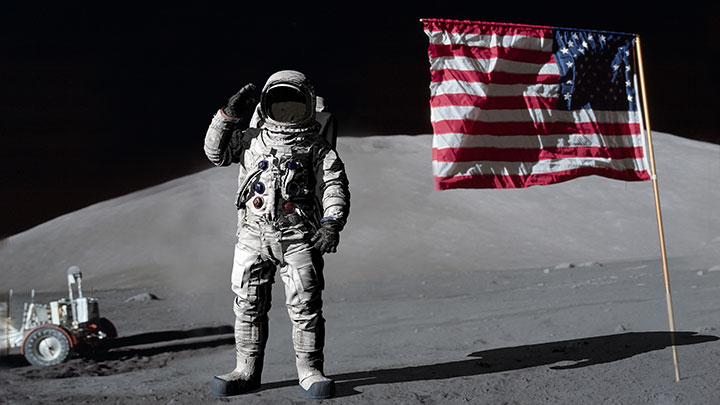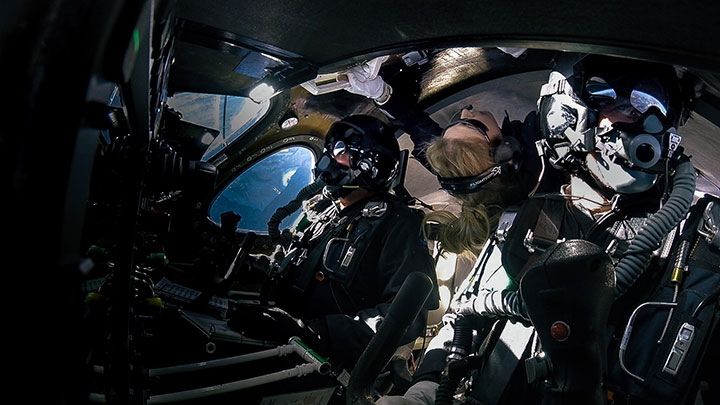
Everyday IP: Spaceships - past, present, patents
At the start of the 1950s, space flight was little more than a theoretical possibility, explored only in science fiction, university science programs and top-secret government projects. Today, just seven decades later, the discussion has shifted to wondering when – not if – passenger space travel will be possible on a commercial scale.
It is nothing short of remarkable how swiftly spacecraft and their capabilities have developed — even considering the massive budgets and intense rivalry that fueled the Space Race! Exploring trends in spaceship design and what they mean for the world of Intellectual Property (IP) may not seem quite as "everyday" as some of the entries in this series, but the goal of key players in the industry, especially those in the private sector, is for space travel to become an everyday thing. And so, we will consider the advances made in space travel thus far with this planned trajectory in mind.
From the Space Race to SpaceX
With the benefit of hindsight, we can look upon the Space Race between the United States and the Soviet Union as an extension of the Cold War. While the endeavor certainly made money for the aerospace manufacturers that produced the actual craft and their various components, the competition was rooted in the desire of each side to prove the superiority of its ideology. Pride and propaganda took center stage, while factors like IP and its commercial value were distant afterthoughts – though space technologies were, of course, closely protected state secrets.
At the onset, the Soviet Union had the advantage, launching the first man-made satellite in 1957, followed shortly by the first human-crewed space flight in 1961. However, the more extensive technological and financial resources of the United States eventually allowed the country to pull ahead, fulfilling President John F. Kennedy's pledge to put a man on the moon by the end of that decade. The Race continued even into the Soviet Union's decline in the 1980s, when the United States focused on Space Shuttle flights as the USSR directed its efforts toward orbital space stations. These days, relations are much more collaborative between nations, as evidenced by the International Space Station: jointly crewed by the United States, Russia, Japan, Canada and the EU.

While astronauts often became household names at the peak of the Space Race, the inventors behind the lauded achievements were, and still are, far less known. Sergei Korolev, developer of the rocket systems that launched the Sputnik satellite and Yuri Gagarin's Vostok 1 craft, was not known to the world until decades after his 1965 death. Operating under the veil of strictest secrecy, he never could have patented his inventions. NASA mathematicians like Katherine Johnson and engineers like Jim Chamberlain, who played similarly crucial roles in 1960s projects, are barely known to the public, aside from the former's portrayal in the 2016 film Hidden Figures. Compare that to today, where the commercial space projects of SpaceX, Blue Origin and Virgin Galactic attract most of their press coverage thanks to the eccentric billionaires who own them – Elon Musk, Jeff Bezos and Richard Branson, respectively.
IP in the commercial space market
Throughout the relatively brief history of space exploration, most projects have been overseen by government agencies: NASA in the United States, the European Space Agency (ESA), Roscosmos in Russia, the Japanese Aerospace Exploration Agency (JAXA) and so on. All of these agencies still fulfill much the same role as always — but it cannot be denied that momentum has, in recent years, swung toward private-sector players.
Spacecraft research, development, design, manufacturing and quality assurance require immense capital and vast material and labor resources. As such, it is of little surprise that the most high-profile commercial projects are spearheaded by the prodigiously wealthy Musk (Tesla CEO and heir to an engineering fortune), Bezos (founder and current executive chairman of Amazon) and Branson (Virgin Group founder and CEO).
Thus far, there have not been IP-related disputes of note between SpaceX, Blue Origin and Virgin Galactic. In fact, in typically brash fashion, Musk proclaimed in a 2017 interview that SpaceX "[had] essentially no patents," citing as his rationale that state actors would simply steal them. In truth, there are at least 70 patents registered to SpaceX — mostly for non-vital components, including antennas and printed circuits. Blue Origin, meanwhile, holds patent rights primarily for rocketry and launch systems. Virgin Galactic holds zero registered patents but licenses a patent from Mojave Aerospace Ventures that informs the design of its space planes.

It is unclear whether this approach of eschewing patents and essentially relying on trade secrets and non-disclosure agreements (NDAs) for protection will persist among commercial space manufacturers in the future. SpaceX and Blue Origin have certainly come to litigious blows in other ways, most notably over a lunar lander contract NASA issued to the former, despite documented concerns over SpaceX's safety practices. Since Virgin Galactic is sticking to space tourism and avoiding utilitarian projects, it may be less likely to get caught up in such legal battles.
The uncharted galaxies of IP law
Government agencies, who will continue to direct most space exploration projects outside of tourism, do not necessarily want only the biggest corporations to drive pivotal innovations in spacecraft design. NASA demonstrated its desire to propel public interest in the field when it let 56 of its original patents enter the public domain in 2016, keeping the rest of them under licensing agreements. In the EU, the ESA licenses its patents for free to businesses and individuals in member states, only requesting royalties from companies headquartered outside of the region. It cannot be denied that the biggest organizations will often be best equipped to implement such patents, but accessibility is important nonetheless.
Creating and utilizing patents is one thing, but where the issue gets truly nebulous is the prospect of how IP rights will be enforced when we are actively exploring, traveling through and perhaps even living in space. The Outer Space Treaty (OST) of 1967 proclaimed that space at large belongs to no one nation of Earth, but does not preclude space mining and other national attempts to collect natural resources. In the relatively nascent framework of space law, strict guidelines as to how IP will be protected beyond Earth do not yet exist.

For the immediate future, various international treaties will likely be used as the basis for extraterrestrial IP law — the Patent Cooperation Treaty (PCT), Berne Convention, Trade-Related Aspects of Intellectual Property Rights (TRIPS) Agreement. Though these agreements may serve as a suitable launch pad, there is no denying that specific space-related regulations will need to be implemented to minimize disputes across the final frontier.
You can rest assured that the experts at Dennemeyer will closely follow all developments in this area and remain at the ready to protect your patent rights and other IP — even in the farthest reaches, where no one has gone before.
Filed in

IP infringement disputes abound in the film industry but some are more dramatic than others. Explore the unusual IP cases spawned from prominent movies.



